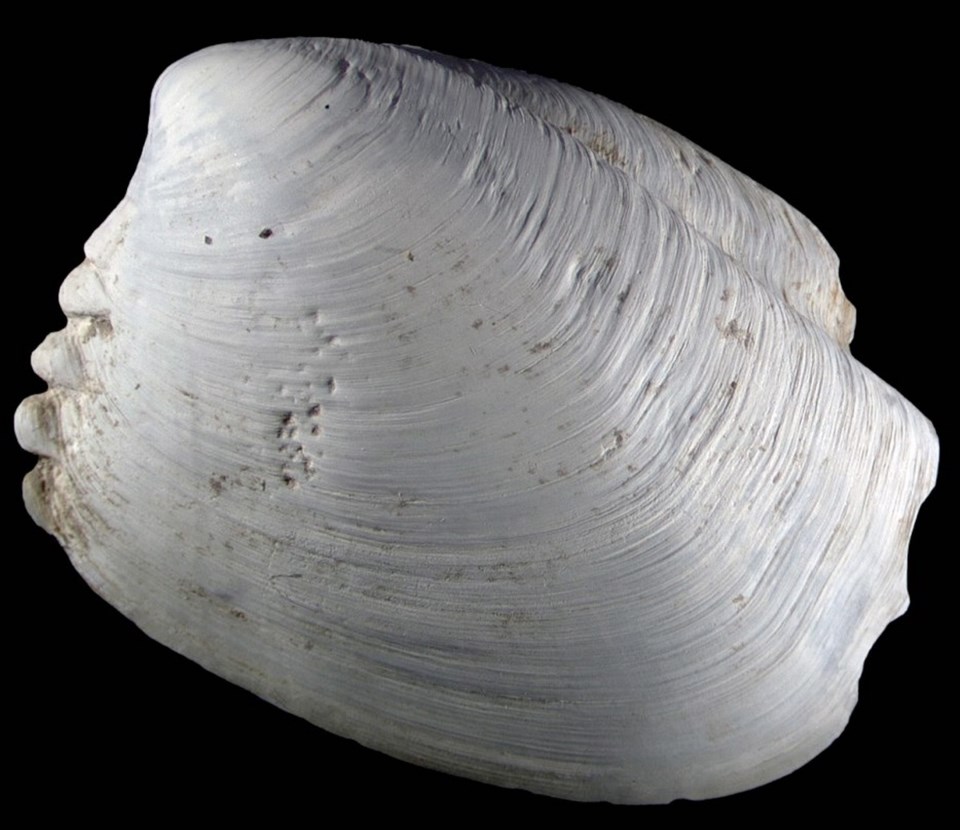From deep oceans to dense forests, there are many places you might expect to discover new species. Museums likely aren’t one of them.
But that’s where a newly identified clam species was recently found. Melissa Frey, curator of invertebrates for the Royal B.C. Museum, said she was sorting through specimens in 2011 when she found a clam that didn’t fit with the others.
“It happens more often than you’d think,” said Frey, who estimated that between 10 to 20 new marine species are discovered off the B.C. coast each year.
This clam was originally collected in 2004 from about 1,000 metres below the surface off Quatsino Sound on the northwestern tip of the Island by researchers from Fisheries and Oceans Canada, who passed it on to the museum.
Frey joined the museum’s team in 2010 and began the process of classifying some of the specimens and entering them in a database.
“I came across this specimen that I noticed was unusual enough that it warranted further inquiry,” she said.
The clam was sizable compared with its closest relatives, measuring about three centimetres in length and 2.5 cm in height. But most notable were its ridges — or the “scalloping” along its shell.
“That trait was quite different from its closest relatives on this coast,” she said.
With only one specimen, however, the question of whether it was a deformity or a new species was still up for debate.
Frey contacted Graham Oliver, a taxonomic expert at the National Museum of Wales with a specialty in this particular family of clams. Oliver studied the clam’s tissue anatomy, gill structure and other features.
“He confirmed there were differences at the anatomical level ... and that it was, in fact, a distinct species,” Frey said.
Frey and Oliver co-authored a recent article in the journal Zootaxa announcing the new species and naming it “ascetoaxinus quatsinoensis,” a reference to its shape and home.
While it’s more common for museum records to reveal species that weren’t previously believed to live in B.C., entirely new species have been discovered there in the past.
And Frey said there’s potential for further discovery in the museum’s collection. She pointed to a study a few years ago that found museum specimens spend an average 21 years between the time they are collected and when they are formally described.
“Imagine, things are collected, often they will come into labs or museums and they just await discovery,” she said.
The reasons for the lag are varied, including a limited number of taxonomic experts and advancements in knowledge that come years after a specimen is collected, she said.
“It takes a while to get things written up, as well. So when you’re working with collaborators across the world — we all have several things on the go.”
For Frey, the find illustrates the fact that museum collections hold significant value. Another museum associate is already investigating a glass sponge specimen believed to be a new species, she said. That discovery has not yet been confirmed.
“People often question why we have these museum collections,” she said. “But we’re constantly discovering new species and new records that have previously gone unnoticed in British Columbia. … So it’s really important that we have these places to preserve biodiversity and capture the story of the natural history of B.C.”



